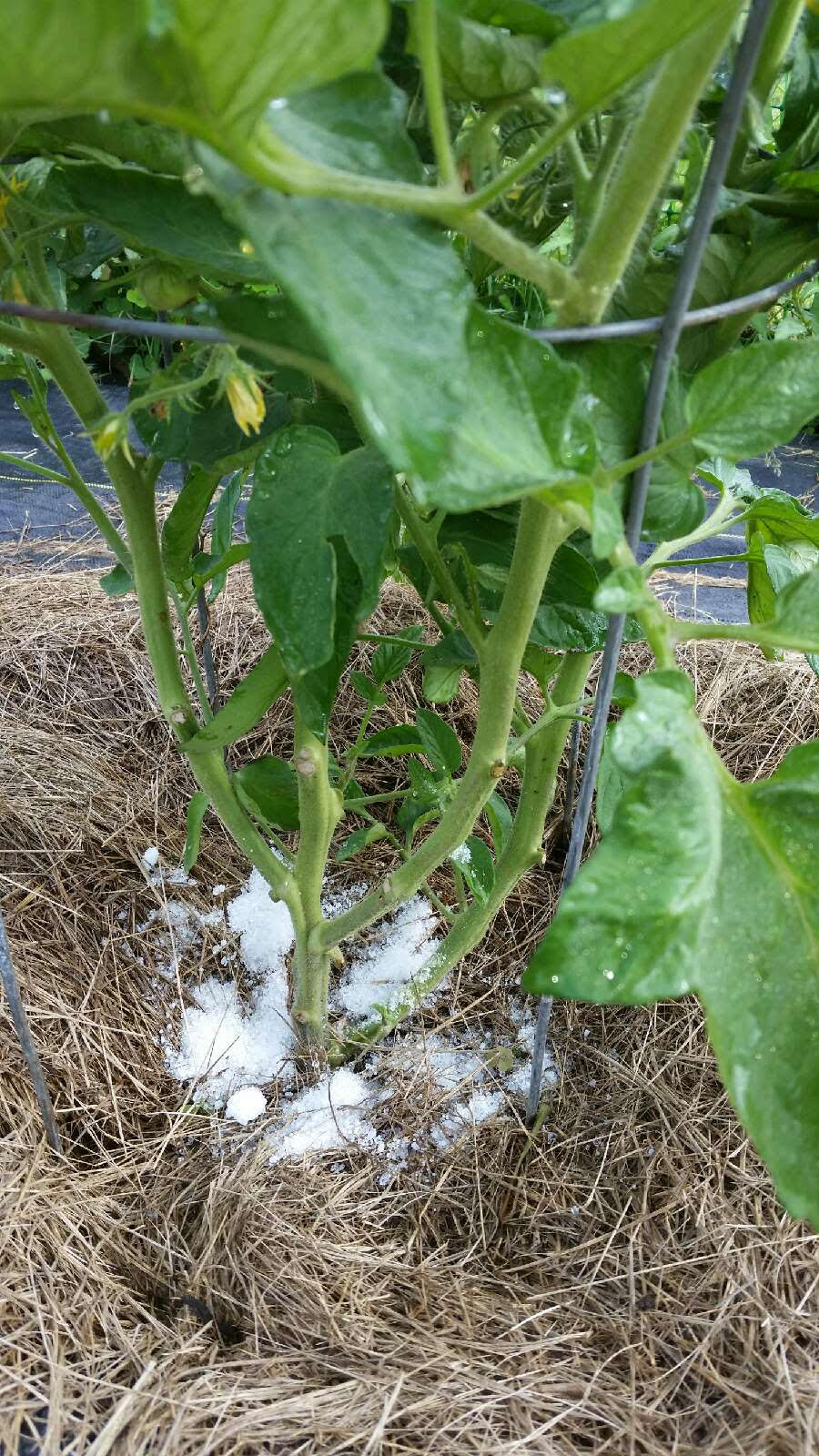Discover What Plants Don't Like Epsom Salt in Your Yard
Discover What Plants Don't Like Epsom Salt in Your Yard
Blog Article
Explore Why Some Plants Deny Epsom Salt as a Nutrient Resource
In the complex globe of plant nutrition, the being rejected of Epsom salt as a viable nutrient source by some plants postures a fascinating problem. Regardless of its rich magnesium and sulfur material, specific plant types appear to shun this readily offered substance. The reasons behind this careful actions delve right into an intricate interplay of plant absorption devices, the one-of-a-kind chemical framework of Epsom salt, and plant-specific nutrient preferences. Recognizing these factors may shed light on the mysteries of why some plants opt out of utilizing this apparently useful nutrient source.
Plant Absorption Mechanisms
In diving into the intricate realm of plant absorption systems, it ends up being obvious that the procedure is governed by an innovative interplay of molecular pathways and physiological characteristics. Plants absorb nutrients primarily via their roots, utilizing various transport systems to uptake crucial elements such as nitrogen, phosphorus, magnesium, and potassium. Magnesium, an important part in chlorophyll synthesis and enzyme activation, plays a critical function in plant growth and advancement.
The absorption of magnesium includes numerous actions, beginning with its accessibility in the soil option. Once liquified, magnesium ions are used up by plant origins through particular transportation healthy proteins embedded in the cell membranes. These healthy proteins facilitate the movement of magnesium across the root cell walls and right into the plant's vascular system, where it is then dispersed to different tissues to sustain different physiological features.
Understanding the intricate systems behind magnesium absorption in plants clarifies just how this necessary nutrient adds to total plant wellness and productivity. By maximizing magnesium uptake pathways, farmers can boost plant returns and quality, emphasizing the value of comprehending plant absorption dynamics for lasting farming methods.
Epsom Salt Chemical Structure
The chemical structure of Epsom salt, likewise recognized as magnesium sulfate heptahydrate, reveals an unique plan of aspects that contribute to its special residential properties and applications. The 7 water molecules are loosely bonded to the magnesium sulfate compound, allowing it to dissolve conveniently in water and be readily taken up by plants through their roots.
The crystal structure of Epsom salt creates monoclinic prisms, which are extended crystals with identical ends. This crystal shape influences the physical homes of Epsom salt, such as its structure and solubility. Understanding the chemical structure of Epsom salt is critical for comprehending its habits as a nutrient source and its communications with plants in gardening and agricultural practices.
Plant-Specific Nutrient Preferences
Plants show unique choices for details nutrients, emphasizing the importance of understanding their specific demands for optimal growth and development. These preferences are determined by different factors, including the plant species, phase of development, ecological problems, and dirt make-up. Some plants might flourish in nitrogen-rich soils, while others require more phosphorus or potassium for healthy and balanced development. Comprehending these plant-specific nutrient choices is vital for taking full advantage of crop returns, enhancing ornamental plant development, and promoting overall plant health and wellness - what plants don't like epsom salt.

Plant-specific nutrient preferences can also vary based on whether the plant Website is a monocot or dicot. Monocots, such as yards and lilies, have different nutrient requirements compared to dicots like roses and tomatoes. In addition, specific plants may display specific shortages or poisonings when exposed to inadequate or excess degrees of certain nutrients. By customizing nutrient supplements to fulfill the specific demands of each plant varieties, cultivators can maximize plant development, lessen nutrient waste, and assistance sustainable farming methods.

Soil Ph and Nutrient Uptake
Offered the essential duty of plant-specific nutrient choices in maximizing growth and wellness, recognizing the connection in between soil pH and nutrient uptake becomes paramount. Dirt pH plays an essential duty in determining the availability of vital nutrients for plant uptake. Various plants have differing pH choices for optimum nutrient absorption. For circumstances, acidic dirts with a reduced pH are favorable for plants like blueberries and azaleas, while alkaline soils with a higher pH fit plants such as lilacs and clematis.
Soil pH influences the chemical kinds of nutrients in the soil. In acidic soils, nutrients like iron, manganese, and aluminum can end up being extra readily available, but too much level of acidity can result in poisoning concerns. On the various other hand, alkaline dirts might restrict the accessibility of nutrients like copper, iron, and zinc, affecting plant development. Keeping the suitable pH degree in the soil is essential for making sure that plants can successfully uptake the essential nutrients for their healthy and click here to find out more balanced advancement and efficiency.
Genetic Consider Nutrient Uptake
In the world of plant nutrition, the interaction of genetic aspects considerably affects the uptake of essential nutrients critical for plant growth and advancement. Genetic factors play a crucial duty fit a plant's ability to take in and use nutrients efficiently. Variations in genes can affect the expression of transport healthy proteins liable for moving nutrients across cell membranes. These transportation proteins, such as networks and carriers, are inscribed by particular genes that can differ amongst plant types or even within the very same varieties.
Additionally, hereditary factors likewise figure out the efficiency of nutrient uptake devices within plants. For example, some plants may possess genetic traits that enhance their capability to scavenge nutrients from the dirt effectively, providing a competitive advantage in nutrient-poor settings. On the various other hand, genetic variants can likewise cause constraints in nutrient uptake, making specific plants more susceptible to shortages also when nutrients are bountiful in the soil.
Understanding exactly how hereditary variables influence nutrient uptake is essential for developing approaches to enhance plant nourishment and improve plant performance in various farming settings. By deciphering the genetic mechanisms involved in nutrient uptake, scientists can function towards developing genetically boosted plant ranges with boosted nutrition acquisition capacities.
Final Thought

In the intricate world of plant nourishment, the being rejected of Epsom salt as a practical nutrient resource by some plants poses an appealing conundrum. what plants don't like epsom salt. Recognizing these plant-specific nutrient choices is vital for maximizing plant yields, improving ornamental plant development, and advertising overall plant wellness
By tailoring nutrient supplementation to fulfill the specific needs of each plant types, growers can maximize plant growth, reduce nutrient waste, and support pop over to this site lasting agricultural methods.
In the world of plant nourishment, the interaction of hereditary factors significantly affects the uptake of essential nutrients critical for plant development and growth. Comprehending these intricacies in plant nutrient uptake is important for maximizing plant development and health and wellness in farming techniques.
Report this page